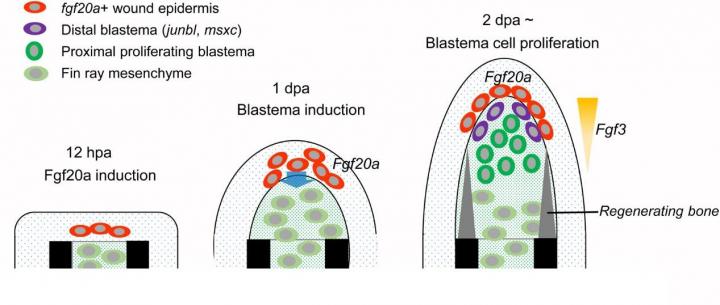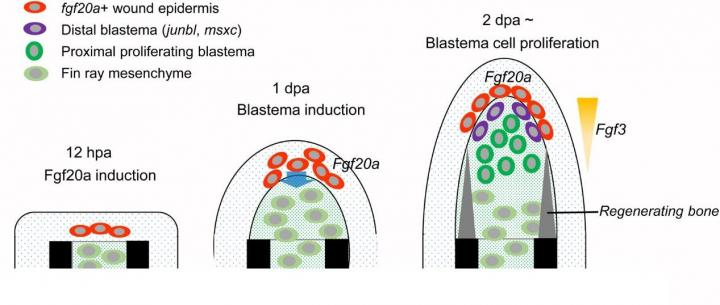
Unlike mammals, certain species of amphibians and fish have the remarkable ability to regenerate tissue. Advances in molecular biological analyses have allowed researchers to identify specific molecules and signalling mechanisms involved in tissue regeneration. Fgf signalling is one such key mechanism.
Associate Professor Atsushi Kawakami and colleagues at Tokyo Institute of Technology and the Graduate University for Advanced Studies (SOKENDAI) identified fgf20a and fgf3/10a as major fgf ligands in wound epidermis and blastemas, respectively. To observe the role of Fgf signalling in regeneration, they transplanted Fgf signalling-deficient mesenchymal cells into wild-type zebrafish. Their findings suggest that Fgf signals act directly on fin ray mesenchyme to form a blastema at the early pre-blastema stage and activate regenerative cell proliferation at the post-blastema stage. This further implies that the early epidermal Fgf20a and later blastemal Fgf3/10a could be responsible for the respective processes. Through gain-of-function analyses, they demonstrated that Fgf20a induces distal blastemal formation and Fgf3 promotes blastema cell proliferation. Their study highlights the distinct functions of Fgfs in wound epidermis and blastemas, acting cooperatively to regulate fin regeneration (Figure).
Fgf20 and Fgf3 are present in all vertebrate species, and further study may lead to clues on inducing tissue regeneration in mammals, including humans. Many challenges remain, however, such as determining what makes Fgf20 activate in wounded epidermis, and how cell proliferation leads to complete recovery of tissue shape and function.
###
Media Contact
Emiko Kawaguchi
[email protected]
81-357-342-975
http://www.titech.ac.jp/english/index.html





